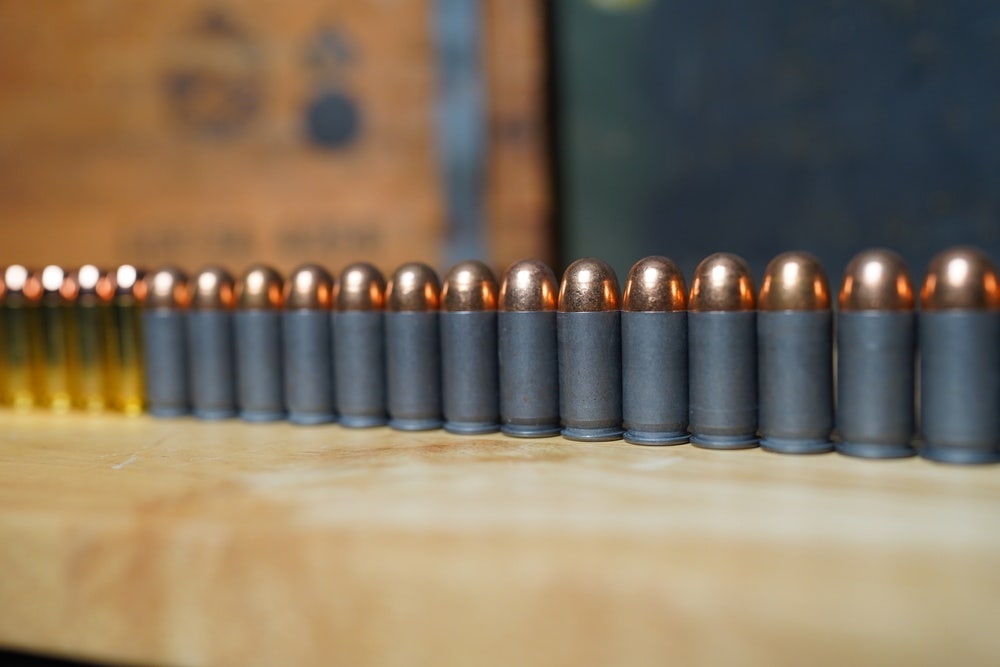Have you ever wondered how to lose an entire day of your life?
I’ll tell you how: walk into your local gun store and float your idea for the best handgun caliber. Once you set that forest of fire, there’s no walking away. Some guys will prefer a smaller caliber with higher capacity, but the bigger the better crowd is always present. Once this crowd gets going, the conversation will inevitably turn to the classic .45 ACP, and of course, the classic counter is the 10mm.
“The .45 ACP was good enough for my grandpappy on Iwo Jima, so it’s good enough for me.”
“Yeah, the .45 ACP punches a big hole, but the 10mm packs a lot more wallop.”
And so on.
Which one is a better caliber? They both have strengths and weaknesses, so let’s explore them.
A Brief History
The origins of these two heavyweight calibers are different but the same: the .45 ACP was born out of a need for a much more powerful military sidearm, and again, the 10mm was developed for the same reason.
The .45 ACP
Around the turn of the 20th Century, revolvers in the .38 caliber were standard issue, whether the Smith & Wesson variety, or in the case of the Army, the .38 Long Colt.
These smooth-shooting .38s are wonderful for punching holes in paper targets, and a good option to stuff in an ankle holster. But they have proven for years to be unreliable at stopping aggressive targets. Since most assailants are by nature aggressive, this poses a serious problem.
You really don’t want to put your life on the line of a handgun that is just going to make the target mad.
The .45 ACP was designed by the infamous John Browning for use in his autoloading pistol, which would become the M1911.
The 10mm Automatic
Also using the failures of a .38 caliber as the backdrop, the 10mm came about after the deadly FBI shootout in Miami, where the .38 Special and 9mm projectiles failed to incapacitate the perpetrators.
By 1989, the 10mm Automatic had become standard issue for all FBI agents using the Smith & Wesson 1076 as a standard sidearm. However, this would prove a short-lived marriage; the 10mm is a punishing caliber, and the all-metal 1006 was harsh. The average FBI agent couldn’t handle its power, so the 10mm was shelved for all but tactical response units in the agency.

.45 ACP Vs. 10mm Ballistics
The two calibers are big bores, but the cartridges were designed in very different lights.
The .45 ACP relies heavily on sheer size to get the job done; the .45 ACP was designed around the use of a 230-grain bullet.
A 10 mm projectile is .400 inches, placing it exactly in between the 9mm (.355) and the .45 ACP. However, it is the extremely high case pressure that sets the 10mm apart; it is designed to operate at 37,500psi, as opposed to the relatively light 21,000psi.
One note about the ballistics section: we’ll use bullet weights that are similar to illustrate the performance of each caliber. However, there are so many variables in terms of bullet weight, bullet design, composition, etc.
Also, for the sake of this article we are focusing on pistol applications, although Bear Creek Arsenal offers a full line of pistol caliber carbines that will include both .45 ACP and 10mm options.
.45 ACP Ballistics
The original design called for a bunt 230-grain ball cartridge. It was a slow cartridge, traveling at around 850 ft/s. Despite advances in ammunition science, the 230-grain bullet still travels right at 850 ft/s. This heavy slug leaves the muzzle carrying around 370 ft/lbs of energy, which hits its target not unlike a wrecking ball.
How about lighter projectiles?
-
The 185-grain projectile (closest to the standard .40/10mm 180-grain) exits the muzzle at 970 ft/s and just shy of 390 ft/lbs of energy.
-
The 200-grain projectile leaves the barrel at 900 ft/s with about 360 ft/lbs of energy. Respectable but not crazy.
10MM Ballistics
Obviously, the smaller the bullet, the lighter it will generally be. Granted, rifle bullets can be an exception since they have a lot more case to work with than handgun caliber cases. But for handgun calibers, the projectile weights are fairly proportionate to the diameter.
-
The 180-grain projectile exits the muzzle at a sizzling 1,180 ft/s with a beefy almost 560 ft/lbs of energy. This equates to nearly 44 percent more muzzle energy than a 185-grain .45 ACP.
-
The hefty 200-grain projectile leaves the muzzle at 1,050 ft/s with 490 ft/lbs of energy.
Interestingly, a +P .45 ACP 200-grain slug is fairly close, showing 1,055 ft/s and 494 ft/lbs of energy.

Applications For Each
The .45 ACP certainly has an edge in real-world usage; the M1911 was the standard issue sidearm for all of World War II, the Korean conflict, and all of Vietnam. It was used more times than you can count in each. The practical evidence proved it to be a more than adequate caliber for anti-personnel applications.
The .45 ACP is far less punishing to shoot, too, which has allowed it to be a constant contender for concealed carry pistols (Springfield XDs, countless micro-1911s, etc.). It is also a popular caliber in state with magazine restrictions; if capacity is capped, you might as well opt for bore diameter.
However, if I am hiking through grizzly country, you bet your hide that I’ve got a Glock 20 or M&P 2.0 10mm loaded up with a heavy 10mm load like the Buffalo Bore Dangerous Game loads. These absolute beasts use a 190-grain mono-metal bullet that exits the muzzle at 1,200 ft/s with a punishing 607 ft/lbs of energy. The flat nose is designed to penetrate deeply and crush bone.
Which One Should You Choose?
Again, it depends on where I’m at and what I’m doing. For everyday carry, I’m going with a small-frame .45 ACP pistol. The recoil is not bad, but you will do a lot of damage. I would still feel just fine carrying a .45 ACP with sturdy loads in feral hog country, brown bear country, and the urban jungle.
The 10mm is a punishing load, which is why it has not made its way into any of the smaller-framed pistols. But if you are in dangerous game country, it is a great alternative to a heavy revolver. Yes, the big bore magnums have much higher energy and velocity. But they are also capped at five or six rounds, and reloading is slow. Also, follow-up shots are much more difficult than a modern autoloader.
A pistol caliber carbine, or comparable AR-pattern pistol, in .45 ACP or 10mm is a great option in the brush or at home. You can optimize accuracy and get the most out of available muzzle energy and velocity while using standard Glock magazines. It’s a great option for anyone who would like to carry both a pistol and carbine using the same magazines.
Of course, you could just get one of each and figure out which you like the best. We certainly can’t argue against it. Also, make sure to top your pistols and carbines with an optic for quick and precise target acquisition when milliseconds count.
[We'd like to extend a huge thank you to John McCoy for his hard work on this article! Check out our other helpful guides about How to Clean a Gun and Hollow Point Bullets.]









